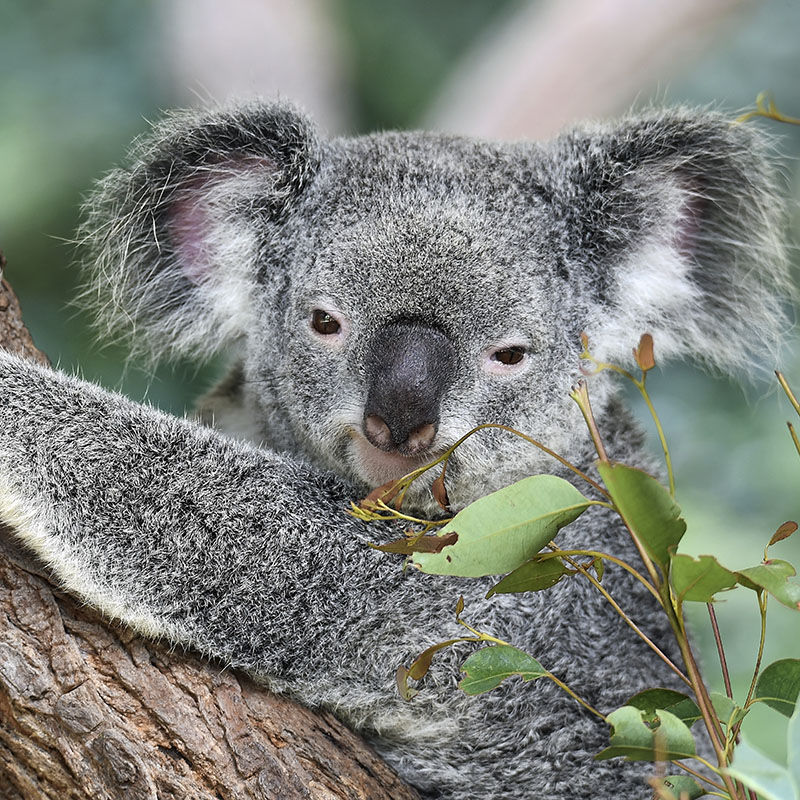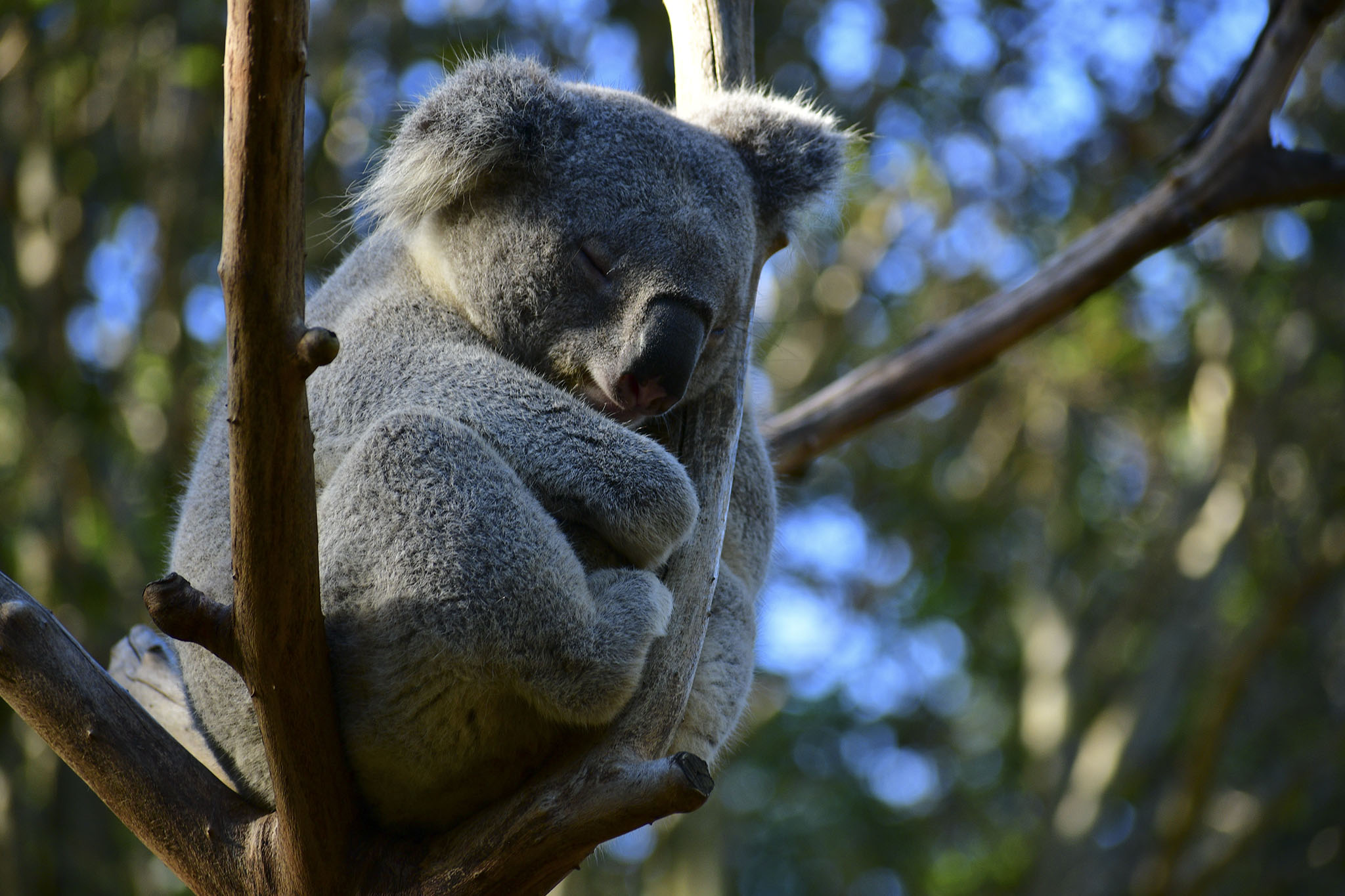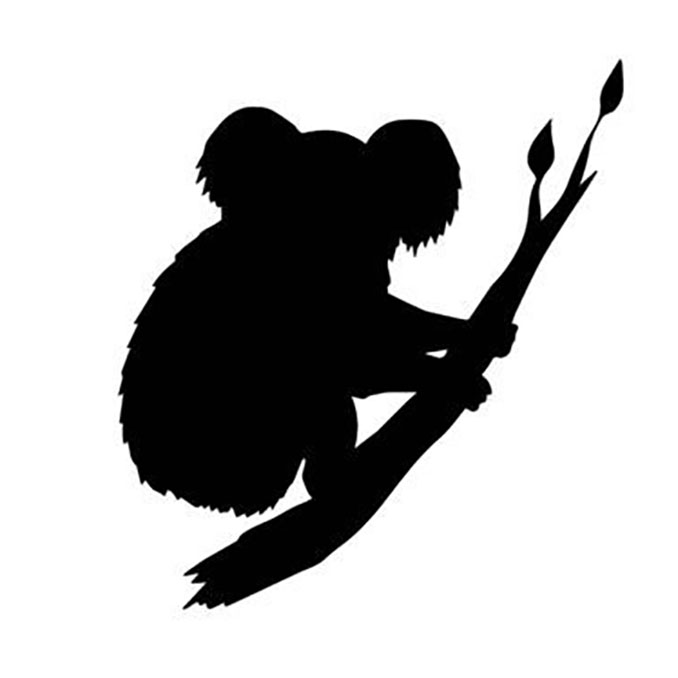Koala
( Phascolarctos cinereus)

Eastern Australian Temperate Forests
STATISTICS
Length up to
60 - 85cm
Weight up to
4 - 15 kgs
Lifespan
13 - 18 years
Skilled climber - excellent hearing - territorial
The koala is an arboreal, herbivorous marsupial native to Australia. It is found in eucalypt woodlands of coastal eastern and southern Australia from Queensland, through to NSW, Victoria and South Australia, since the leaves make up most of its diet. It is recognisable by its large head, fluffy ears and non-existent tail. The koala has the most effective insulating back-fur of any marsupial and is highly resilient to wind and rain and can even reflect solar radiation. Its curved, sharp claws are well adapted for climbing trees. Its large forepaws have two opposable digits that allow it to grasp small branches.
This species is largely sedentary and can sleep for up to 20 hours a day, which is believed to be due to its low caloric and nutritional diet. Koalas play a crucial role in their ecosystem, consuming excess vegetation, therefore reducing the biomass that fuels frequent and intense fires. During the rainy season, koala droppings act as nutrients for the undergrowth as well as food for insects and small rodents. As a koala feeds, it breaks branches, and drops leaves making them available to ground insects.
This species is asocial, marking its presence with secretions from scent glands on its chest. Being a marsupial, it gives birth to premature young which remain in its pouch for the first 6 – 7 months of life.
BIODIVERSITY BENEFIT
Reducing biomass that fuels fires and nutrient cycling
THREATS
Pathogens
Pathogens such as chalmydiaceae bacteria and koala retrovirus.
Droughts
Wildfires
PROTECT THE WILDARK 100




